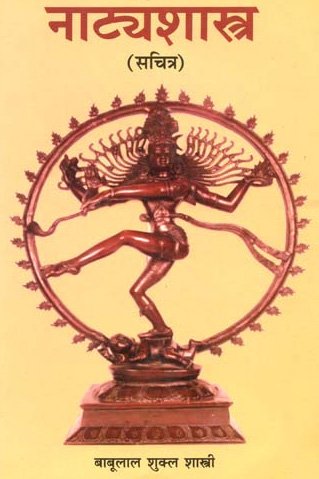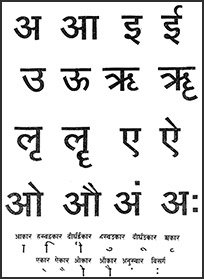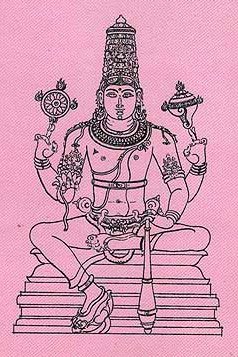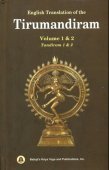Asi, Āsi, Āśī, Ashi, Asī, Āśi: 33 definitions
Introduction:
Asi means something in Buddhism, Pali, Hinduism, Sanskrit, Jainism, Prakrit, Marathi, biology. If you want to know the exact meaning, history, etymology or English translation of this term then check out the descriptions on this page. Add your comment or reference to a book if you want to contribute to this summary article.
The Sanskrit terms Āśī and Āśi can be transliterated into English as Asi or Ashi, using the IAST transliteration scheme (?).
Images (photo gallery)
In Hinduism
Purana and Itihasa (epic history)
Source: Cologne Digital Sanskrit Dictionaries: The Purana Index1) Asi (असि).—The sword; particularly that of Śiva.*
- * Vāyu-purāṇa 30. 124; 101. 272.
2a) Āśī (आशी).—An apsaras.*
- * Vāyu-purāṇa 69. 5.
2b) The daughter of Bhaga and Siddhi.*
- * Bhāgavata-purāṇa VI. 18. 2.
Asi (असि) refers to the name of a Weapon mentioned in the Mahābhārata (cf. IX.44.105). Note: The Mahābhārata (mentioning Asi) is a Sanskrit epic poem consisting of 100,000 ślokas (metrical verses) and is over 2000 years old.

The Purana (पुराण, purāṇas) refers to Sanskrit literature preserving ancient India’s vast cultural history, including historical legends, religious ceremonies, various arts and sciences. The eighteen mahapuranas total over 400,000 shlokas (metrical couplets) and date to at least several centuries BCE.
Dhanurveda (science of warfare)
Source: Wisdom Library: DhanurvedaAsi (असि) refers to a weapon (“sword”). It is a Sanskrit word defined in the Dhanurveda-saṃhitā, which contains a list of no less than 117 weapons. The Dhanurveda-saṃhitā is said to have been composed by the sage Vasiṣṭha, who in turn transmitted it trough a tradition of sages, which can eventually be traced to Śiva and Brahmā.

Dhanurveda (धनुर्वेद) refers to the “knowledge of warfare” and, as an upaveda, is associated with the Ṛgveda. It contains instructions on warfare, archery and ancient Indian martial arts, dating back to the 2nd-3rd millennium BCE.
Natyashastra (theatrics and dramaturgy)
Source: Wisdom Library: Nāṭya-śāstraAsi (असि) refers to the “sword”, a weapon which should measure should measure fourty aṅguli (unit of measurement), according to Nāṭyaśāstra chapter 23. In dramatic plays, weapons such as asi should be made by experts using proper measurements and given to persons engaged in a fight, angry conflict or siege. It forms a component of āhāryābhinaya (extraneous representation).

Natyashastra (नाट्यशास्त्र, nāṭyaśāstra) refers to both the ancient Indian tradition (shastra) of performing arts, (natya—theatrics, drama, dance, music), as well as the name of a Sanskrit work dealing with these subjects. It also teaches the rules for composing Dramatic plays (nataka), construction and performance of Theater, and Poetic works (kavya).
Vyakarana (Sanskrit grammar)
Source: Wikisource: A dictionary of Sanskrit grammarAsi (असि).—(I) Uṇādi affix अस् (as); (2) tad. affix अस् (as). See above the word अस् (as).

Vyakarana (व्याकरण, vyākaraṇa) refers to Sanskrit grammar and represents one of the six additional sciences (vedanga) to be studied along with the Vedas. Vyakarana concerns itself with the rules of Sanskrit grammar and linguistic analysis in order to establish the correct context of words and sentences.
Shaktism (Shakta philosophy)
Source: Google Books: Manthanabhairavatantram1) Āśī (आशी) (also, Ahi) refers to a “snake”, according to Tantric texts such as the Kubjikāmata-tantra, the earliest popular and most authoritative Tantra of the Kubjikā cult.—Accordingly, “Penetrated (samāviṣṭā) by the bliss of the Command and aroused by the joy of the hymn (addressed to her), the great being said: ‘I do not know who is praising me here. To whom should I give a boon? My gaze (dṛṣṭipāta) is hard to behold like a venomous snake (āśī-viṣa). How have (you been able to) bear it? Then ask for whatever you please!’”.
2) Asi (असि) refers to “sword” and is used to visualize Bhairava, according to the Manthānabhairavatantra, a vast sprawling work that belongs to a corpus of Tantric texts concerned with the worship of the goddess Kubjikā.—Accordingly, “He has eight faces and, very powerful, shines like a white lotus. He is mightily proud and has sharp teeth and great body. He is terrible and fierce and his face is deformed. O Śambhu, he has twenty arms and the goddess sits on his lap. He holds a sword [i.e., asi], mallet and noose, a double-headed drum, a dagger, the Kaustubha jewel, a rosary, a skull bowl full of fruit and the like and a piece of human flesh. [...]”.
3) Āsī (आसी) refers to one of the thirty-two Bhairavīs (also Dūtis) embodying the syllables of the goddess’s Vidyā, according to the Manthānabhairavatantra.—The thirty-two Bhairavīs [i.e., Āsī] are the consorts of the Bhairavas presiding over the sonic energies of the thirty-two syllables of her Vidyā.

Shakta (शाक्त, śākta) or Shaktism (śāktism) represents a tradition of Hinduism where the Goddess (Devi) is revered and worshipped. Shakta literature includes a range of scriptures, including various Agamas and Tantras, although its roots may be traced back to the Vedas.
Shaivism (Shaiva philosophy)
Source: Brill: Śaivism and the Tantric TraditionsAsi (असि) refers to a “sword”, according to the Guhyasūtra chapter 3.—Accordingly, “[...] If one torments the body with rain, cold and heat, …, devoted to recitation and meditation, this is called the Great Observance. A woman skilled in the pleasures of love-making, endowed with beauty and youth; such a woman one should procure, holding one’s senses back from the objects of the senses, and one should kiss and embrace [her], placing the penis upon her sex while remaining focussed upon recitation and meditation—one performs [thus] the Sword-Blade Observance (asi-dhāra-vrata). If one should succumb to the control of desire, then one certainly falls into hell. [...]”.

Shaiva (शैव, śaiva) or Shaivism (śaivism) represents a tradition of Hinduism worshiping Shiva as the supreme being. Closely related to Shaktism, Shaiva literature includes a range of scriptures, including Tantras, while the root of this tradition may be traced back to the ancient Vedas.
Pancaratra (worship of Nārāyaṇa)
Source: Shodhganga: Kasyapa Samhita—Text on Visha Chikitsa (p)Asi (असि) refers to a “sword” and represents one of the attributes of Garuḍa, according to the second chapter of the Kāśyapa Saṃhitā: an ancient Sanskrit text from the Pāñcarātra tradition dealing with both Tantra and Viṣacikitsā (Toxicology).—Accordingly, text text dictates that a Garuḍa-upāsaka, the aspirant, must meditate on Garuḍa of the following form—[...] Garuḍa, seated on a lotus, adorned with these ornaments [i.e., the eight divine serpents], has huge wings and immense energy. Garuḍa of smiling countenance, blazes with eight shoulders adorned by the weapons—conch, discus, nectar-pot, serpent, mace, and sword (asi) and two hands reaching out to the feet of the Lord.

Pancaratra (पाञ्चरात्र, pāñcarātra) represents a tradition of Hinduism where Narayana is revered and worshipped. Closeley related to Vaishnavism, the Pancaratra literature includes various Agamas and tantras incorporating many Vaishnava philosophies.
In Buddhism
Tibetan Buddhism (Vajrayana or tantric Buddhism)
Source: academia.edu: The Structure and Meanings of the Heruka MaṇḍalaAsi (असि) refers to a type of sword and represents one of the items held in the right hand of Heruka: one of the main deities of the Herukamaṇḍala described in the 10th century Ḍākārṇava chapter 15. Heruka is positioned in the Lotus (padma) at the center; He is the origin of all heroes; He has 17 faces (with three eyes on each) and 76 arms [holding, for example, asi]; He is half black and half green in color; He is dancing on a flaming sun placed on Bhairava and Kālarātrī.
Source: OSU Press: Cakrasamvara SamadhiAsi (असि) refers to a “sword”, according to the Guru Mandala Worship (maṇḍalārcana) ritual often performed in combination with the Cakrasaṃvara Samādhi, which refers to the primary pūjā and sādhanā practice of Newah Mahāyāna-Vajrayāna Buddhists in Nepal.—Accordingly, “Oṃ homage to the fierce Vajrapāṇi, great vajra-anger, a Bhairava, With gigantic fangs, grasping in hand a sword [e.g., asi-hasta], club, ax and noose”.

Tibetan Buddhism includes schools such as Nyingma, Kadampa, Kagyu and Gelug. Their primary canon of literature is divided in two broad categories: The Kangyur, which consists of Buddha’s words, and the Tengyur, which includes commentaries from various sources. Esotericism and tantra techniques (vajrayāna) are collected indepently.
Mahayana (major branch of Buddhism)
Source: Wisdom Library: Maha Prajnaparamita SastraAsi (असि, “swords”) refers to one of the various “outer torments”, according to Mahāprajñāpāramitāśāstra (chapter XV).—Accordingly, “There are two kinds of torments (alpābādatā), those having an external cause and those having an internal cause. The external torments are cold (śīta), heat (uṣṇa), hunger (kṣudh), thirst (pipāsā), armies (caturaṅgabala), swords (asi), knives (śastra), clubs (daṇḍa), catastrophes (patana), ruins (avamardana); all these external accidents of this kind are called torments (ādādha). The inner torments are the 404 illnesses (vyādhi) that come from improper food or irregular sleep; all the sicknesses of this kind are called inner sicknesses. Corporeal beings (dehin) all have to suffer from these two kinds of illnesses. This is why Ratnakāra asks Śākyamuni if he has but little torments and suffering”.
Source: academia.edu: A Study and Translation of the GaganagañjaparipṛcchāĀśī (आशी) refers to a “serpent”, according to the Gaganagañjaparipṛcchā: the eighth chapter of the Mahāsaṃnipāta (a collection of Mahāyāna Buddhist Sūtras).—Accordingly: “[...] (177) The Lord, the protector, ascending to the height of eighty palm trees (tāla) in the open space, said to the king (Puṇyālaṃkāra): ‘[...] (179) Living beings are never satisfied because of desire, and thus again and again the thirst of desire is the cause. The fool who remain in the realm of objects do not know how to be satisfied, and only those who are satisfied with insight are really satisfied. (180) Just as an illusion is deceptive and essenceless, it is taught that the five parts of the personality are as an illusion, these spheres are as a serpent-venom (āśī-viṣa), the six sense organs are as an empty city. [...]’”.
Source: De Gruyter: A Buddhist Ritual Manual on AgricultureAsi (असि) refers to a “sword” (suitable for an offering ceremony), according to the Vajratuṇḍasamayakalparāja, an ancient Buddhist ritual manual on agriculture from the 5th-century (or earlier), containing various instructions for the Sangha to provide agriculture-related services to laypeople including rain-making, weather control and crop protection.—Accordingly, [as the Bhagavān teaches the offering manual of the root-heart] “[...] Having enchanted a sword (asi) seven times and having made the Nāga cross-legged hand gesture, one should grab [the sword] and stand facing the clouds. Merely upon grabbing [the sword] it is set on fire. All Nāgas are frightened. [...]”

Mahayana (महायान, mahāyāna) is a major branch of Buddhism focusing on the path of a Bodhisattva (spiritual aspirants/ enlightened beings). Extant literature is vast and primarely composed in the Sanskrit language. There are many sūtras of which some of the earliest are the various Prajñāpāramitā sūtras.
In Jainism
General definition (in Jainism)
Source: HereNow4u: Lord VṛṣabhanāthaAsi (असि, “military”).—Having set up a system of law and order and prevention of crime, king Vṛṣabhanātha made a plan for his subjects to become self-sufficient in the affairs of the karmabhūmi (the mundane world of action). For the welfare of subjects he trained them in asi (art of government / military occupation), masi (writing) and kṛṣi (farming) and a hundred crafts.
He taught asi, masi and kṛṣi to the human society, thus saving them from consuming the inedible / inconsumable, leading a sātvika (pure) life and explained to them that if necessity led them to take up a faulty vocation, in that case, knowing it to be sin, their aim should be to move towards a virtuous life this was indeed samyak-darśana (right view of reality / true spiritual path).
Source: Encyclopedia of Jainism: Tattvartha Sutra 3: The Lower and middle worldsAsi (असि, “defense”) refers to a type of “civilized people who indulge in activities with attachment” (sāvadhyakarma-ārya), which itself is a division of karmārya: one of the classes of āryas without extraordinary powers (ṛddhi). These Ārya (civilized people) represent one of the two classes of human beings, according to the 2nd-century Tattvārthasūtra 3.46. What is meant by defense (asi) activities? To develop expertise in using swords, bows and other weapons for defense and fighting is called defense (asi) activities.
Source: The University of Sydney: A study of the Twelve ReflectionsAsi (असि) refers to “swords”, according to the 11th century Jñānārṇava, a treatise on Jain Yoga in roughly 2200 Sanskrit verses composed by Śubhacandra.—Accordingly, “This most powerful [and] cruel death devours against their will the life of those who possess a body that has settled in the middle world, in hell, in the world of Brahmā, in Indra’s abode, in the middle of the ocean, inside the forest, at all quarters of the globe, on a mountain-peak, in a place difficult of access on account of fire, forest, cold, darkness, thunderbolts [and] swords (asi), or in [a place] crowded with a troop of ruttish elephants”.
Source: academia.edu: Tessitori Collection IAsi (असि) refers to one of the fifteen Paramādhārmīs causing suffering in the hells (naraka), according to Rājasoma’s “Naraka ko coḍhālyo”, which is included in the collection of manuscripts at the ‘Vincenzo Joppi’ library, collected by Luigi Pio Tessitori during his visit to Rajasthan between 1914 and 1919.—No name of any source is given in the text but the three stages followed in the exposition correspond closely to those found in a handbook such as Nemicandrasūri’s Pravacanasāroddhāra, [e.g.,] 3) sufferings inflicted by the fifteen Paramādhārmīs [e.g., Asi]. [...] These gods (here Sūra or Deva) form a sub-class of the Asurakumāras and perform their tasks in the first, second and third hells.

Jainism is an Indian religion of Dharma whose doctrine revolves around harmlessness (ahimsa) towards every living being. The two major branches (Digambara and Svetambara) of Jainism stimulate self-control (or, shramana, ‘self-reliance’) and spiritual development through a path of peace for the soul to progess to the ultimate goal.
Biology (plants and animals)
Source: Google Books: CRC World Dictionary (Regional names)Ashi in South America is the name of a plant defined with Calycophyllum spruceanum in various botanical sources. This page contains potential references in Ayurveda, modern medicine, and other folk traditions or local practices It has the synonym Eukylista spruceana Benth. (among others).
Example references for further research on medicinal uses or toxicity (see latin names for full list):
· Phytochemistry (2003)
· Flora Brasiliensis (1889)
· Hooker’s Journal of Botany and Kew Garden Miscellany (1853)
If you are looking for specific details regarding Ashi, for example pregnancy safety, side effects, health benefits, chemical composition, extract dosage, diet and recipes, have a look at these references.

This sections includes definitions from the five kingdoms of living things: Animals, Plants, Fungi, Protists and Monera. It will include both the official binomial nomenclature (scientific names usually in Latin) as well as regional spellings and variants.
Languages of India and abroad
Pali-English dictionary
Source: BuddhaSasana: Concise Pali-English Dictionaryasi : (m.) sword. || āsi (3rd sing. aor. of as), he was. (aor. of āsati), sat. āsī (f.), blessing; fang of a snake.
Source: Sutta: The Pali Text Society's Pali-English DictionaryAsi, (Vedic asi, Av. aṃhū Lat. ensis) a sword, a large knife D. I, 77 (= DA. I, 222); M. II, 99; A. I, 48 = (asinā sīsaṃ chindante); IV, 97 (asinā hanti attānaṃ); J. IV, 118 (asi sunisito), 184; V, 45 (here meaning “sickle”), 475 (asiñ ca me maññasi, probably faulty for either “āsiñ ca me” or “āsiñcam me”); Vism. 201 (ñāṇâsi the sword of knowledge); PvA. 253 (asinā pahaṭa).
—camma sword & shield Vin. II, 192; A. III, 93; J. VI, 449.—tharu the hilt of a sword DhA. IV, 66.—nakha having nails like swords Pgdp 29.—patta having sword-like leaves, with swords (knives) for leaves (of the sword-leaf-wood in Niraya, a late feature in the descriptions of Purgatory in Indian speculative Theology, see e.g. Mārk-aṇḍeyapurāṇa XII. 24 sq. ; Mhbhārata XII. 321; Manu IV. 90; XII. 75; Scherman, Visionsliteratur pp. 23 sq.) J. VI, 250 (°niraya); PvA. 221 (°vana); Sdhp. 194.—pāsa having swords for snares (a class of deities) Miln. 191.—māla (-kamma) sword-garland (-torture) J. III, 178 (+sīsaṃ chindāpeti); Dāvs III, 35. Preferable to interpretation “sword-dirt”, see māla (mālā).—lakkhana “swordsign”, i.e. (fortune-telling from) marks or a sword D. I, 9; J. I, 455.—loma having swords for hair S. II, 257, cp. Vin. III, 106.—sūna slaughter-house (so also B. Sk. asisūnā Divy 10, 15; see further detail under “kāma” similes) Vin. II, 26; M. I, 130, 143; A. III, 97.—sūla a swordblade Th. 2, 488 (expld. at ThA. 287 by adhikuṭṭanatthena, i.e. with reference to the executioner’s block, cp. also sattisūla). (Page 88)
— or —
Āsi, & Āsiṃ 3rd & 1st sg. aor. of atthi (q. v.). (Page 115)

Pali is the language of the Tipiṭaka, which is the sacred canon of Theravāda Buddhism and contains much of the Buddha’s speech. Closeley related to Sanskrit, both languages are used interchangeably between religions.
Marathi-English dictionary
Source: DDSA: The Molesworth Marathi and English Dictionaryasi (असि).—m S A sword.
--- OR ---
āśī (आशी).—a S That eats. In comp. as āmṛtāśī, vi- ṣāśī, annāśī, alpāśī, mitāśī, pathyāśī, bahavāśī.
Source: DDSA: The Aryabhusan school dictionary, Marathi-Englishasi (असि).—m A sword.
--- OR ---
āśī (आशी).—a That eats (in compounds as amṛtāśī).
Marathi is an Indo-European language having over 70 million native speakers people in (predominantly) Maharashtra India. Marathi, like many other Indo-Aryan languages, evolved from early forms of Prakrit, which itself is a subset of Sanskrit, one of the most ancient languages of the world.
Sanskrit dictionary
Source: DDSA: The practical Sanskrit-English dictionaryAsi (असि).—[asyate kṣipyate; as-in Uṇādi-sūtra 4.139]
1) A sword
2) A knife used for killing animals.
3) [asyati sevanena pāpāni] Name of a river to the south of Benares.
4) Breath (śvāsa).
-si ind. The 2nd pers. sing. of the present of अस् (as) to be, used as an indeclinable in the sense of 'त्वम् (tvam)' thou; as in कृतवानसि विप्रियं न मे (kṛtavānasi vipriyaṃ na me) Kumārasambhava 4.7 (where however asi may be taken as a verb).
Derivable forms: asiḥ (असिः).
--- OR ---
Asī (असी).—Name of a river (near Banaras); see असि (asi).
--- OR ---
Āśi (आशि).—f. The act of eating food.
Derivable forms: āśiḥ (आशिः).
--- OR ---
Āśi (आशि).—f.
1) (°śīḥ, °śīrbhyām &c.) [आशास्-क्विप्, अत इत्वम् (āśās-kvip, ata itvam)] A blessing, benediction. (It is thus defined:vātsalyādyatra mānyena kaniṣṭhasyābhidhīyate | iṣṭāvadhārakaṃ vākyamāśīḥ sā parikīrtitā.) आशिस् (āśis) is sometimes distinguished from वर (vara), the former being taken to be merely an expression of one's good wishes which may or may not be realised; while a वर (vara) is a boon which is more permanent in character and surer of fulfilment; cf. वरः खल्वेष नाशीः (varaḥ khalveṣa nāśīḥ) Ś.4; आशिषो गुरुजन- वितीर्णा वरतामापद्यन्ते (āśiṣo gurujana- vitīrṇā varatāmāpadyante) K.291; अमोघाः प्रतिगृह्णन्तावर्ध्यानुपदमाशिषः (amoghāḥ pratigṛhṇantāvardhyānupadamāśiṣaḥ) R.1.44,11.6; Kumārasambhava 5.76,7.47.
2) Act of bestowing a blessing upon others.
3) A prayer, wish, desire; जगच्छरण्यस्य निराशिषः सतः (jagaccharaṇyasya nirāśiṣaḥ sataḥ) Kumārasambhava 5.76, Bhagavadgītā (Bombay) 4.21,6.1.
4) A serpent's fang (cf. āśī).
5) One of the eight chief medicaments (vṛddhi).
--- OR ---
Āśī (आशी).—[āśīryate'nayā, ā-śṝ-kvip pṛṣo°]
1) A serpent's fang; विषमाशीभिरनारतं धमन्तः (viṣamāśībhiranārataṃ dhamantaḥ) Śi.
2) A kind of venom.
3) A blessing, benediction.
--- OR ---
Āśī (आशी).—2 Ā.
1) To lie or sleep on; कुसुमान्याशेरते षट्पदाः (kusumānyāśerate ṣaṭpadāḥ) V.2.23. v. l.
2) To pass (the night) in sleep.
3) To wish, pray for; सुद्युम्नस्याशयन्पुंस्त्वमुपाधावत शंकरम् (sudyumnasyāśayanpuṃstvamupādhāvata śaṃkaram) Bhāgavata 9.1.37.
4) To dwell, live, inhabit.
Source: Cologne Digital Sanskrit Dictionaries: Shabda-Sagara Sanskrit-English DictionaryAsi (असि).—m.
(-siḥ) A sword, a scymitar. E. asa to cast, and in Unadi aff.
--- OR ---
Āśī (आशी).—f.
(-śīḥ) 1. Wishing or bestowing a blessing. 2. A serpent’s fang. 3. A kind of venom, the venom of a snake. E. āṅ before aś to eat, ac and ṅīp affixes: see the preceding.
Source: Cologne Digital Sanskrit Dictionaries: Benfey Sanskrit-English DictionaryAsi (असि).—m. A sword, [Rāmāyaṇa] 3, 50, 2.
— Cf. [Latin] ensis, cf. akṣan = akṣi, and = pīvan.
Source: Cologne Digital Sanskrit Dictionaries: Cappeller Sanskrit-English DictionaryAsi (असि).—[masculine] sword, knife; p. asimant.
--- OR ---
Āśi (आशि).—[substantive] eating.
--- OR ---
Āśī (आशी).—lie in or on ([accusative]).
Āśī is a Sanskrit compound consisting of the terms ā and śī (शी).
Source: Cologne Digital Sanskrit Dictionaries: Monier-Williams Sanskrit-English Dictionary1) Asi (असि):—m. (√2. as), a sword, scimitar, knife (used for killing animals), [Ṛg-veda; Atharva-veda] etc.
2) (also) a shark, alligator, [cf. Lexicographers, esp. such as amarasiṃha, halāyudha, hemacandra, etc.]
3) f. Name of a river (near Benares), [Vāmana-purāṇa] (cf. asī);
4) [Latin] ensi-s.
5) Asī (असी):—f. (= asi f. q.v.) Name of a river (near Benares), [Mahābhārata vi, 338.]
6) Āśi (आशि):—[from āśa] 1. āśi f. eating, [Kauśika-sūtra]
7) Āśī (आशी):—[from ā-śās] 1. āśī f. = 1 āśis, [cf. Lexicographers, esp. such as amarasiṃha, halāyudha, hemacandra, etc.]
8) [v.s. ...] (for 2. āśī See 2. āśis.)
9) Āśi (आशि):—[=ā-śi] 2. ā-√śi [Parasmaipada] ([imperative] ā-śiśīhi)
—to sharpen ([Sāyaṇa]) id est. to make zealous, [Ṛg-veda vii, 16, 6; viii, 21, 8] ([to bestow, let partake, [Boehtlingk & Roth’s Sanskrit-Woerterbuch]]);—(for 1. āśi See 2. āśa.)
10) Āśī (आशी):—[from āśis] 2. āśī f. = 2 āśis, [cf. Lexicographers, esp. such as amarasiṃha, halāyudha, hemacandra, etc.]
11) [=ā-śī] 3. ā-√śī [Ātmanepada] ([irregular] -śaye [3. sg.] [Ṛg-veda; Atharva-veda] : [imperative] 3. sg. ā-śayām, [Atharva-veda v, 25, 9]; 3. [plural] -śerate, [Vikramorvaśī])
—to lie or rest on or round:
—[Parasmaipada] ([imperfect tense] 3. [plural] āśayan) to wish, [Bhāgavata-purāṇa ix, 1, 37] ([perhaps this form is rather a [Nominal verb] from 1. āśā?]) :
—[Causal] ([imperfect tense] āśīśayat) to lay or put upon, [Rāmāyaṇa]
12) Āsi (आसि):—[=ā-√si] [Parasmaipada] ([perfect tense] ā-siṣāya, [Ṛg-veda x, 28, 10]) to wrap or pack up.
Source: Cologne Digital Sanskrit Dictionaries: Yates Sanskrit-English Dictionary1) Asi (असि):—(siḥ) 2. m. A sword.
2) Āśī (आशी):—[ā+śī] (śīḥ) 3. f. Idem.
Source: DDSA: Paia-sadda-mahannavo; a comprehensive Prakrit Hindi dictionary (S)Asi (असि) in the Sanskrit language is related to the Prakrit words: Asi, Āsī.
[Sanskrit to German]
Sanskrit, also spelled संस्कृतम् (saṃskṛtam), is an ancient language of India commonly seen as the grandmother of the Indo-European language family (even English!). Closely allied with Prakrit and Pali, Sanskrit is more exhaustive in both grammar and terms and has the most extensive collection of literature in the world, greatly surpassing its sister-languages Greek and Latin.
Prakrit-English dictionary
Source: DDSA: Paia-sadda-mahannavo; a comprehensive Prakrit Hindi dictionary1) Asi (असि) in the Prakrit language is related to the Sanskrit word: Asi.
2) Āsi (आसि) also relates to the Sanskrit word: Āśri.
3) Āsi (आसि) also relates to the Sanskrit word: Āśin.
4) Āsī (आसी) also relates to the Sanskrit word: Āśī.
5) Āsī (आसी) also relates to the Sanskrit word: Āśiṣ.
Prakrit is an ancient language closely associated with both Pali and Sanskrit. Jain literature is often composed in this language or sub-dialects, such as the Agamas and their commentaries which are written in Ardhamagadhi and Maharashtri Prakrit. The earliest extant texts can be dated to as early as the 4th century BCE although core portions might be older.
Kannada-English dictionary
Source: Alar: Kannada-English corpusAsi (ಅಸಿ):—[verb] to allow or cause to run out from a vessel; to scatter; to spill over.
--- OR ---
Asi (ಅಸಿ):—[verb] to move to and fro in quick succession; to quiver; to tremble; to shiver.
--- OR ---
Asi (ಅಸಿ):—[verb] to become slender or feeble.
--- OR ---
Asi (ಅಸಿ):—[noun] a flat stone on which spices are ground; ಅಸಿಯಗುಂಡು [asiyagumdu] a siyaguṇḍu a dressed cylindrical stone used to roll on a flat stone to grind the spices.
--- OR ---
Asi (ಅಸಿ):—
1) [adjective] having little fat or flesh; lean; slender; thin.
2) [adjective] that is abnormally lean, as by starvation or disease; emaciated.
3) [adjective] ಅಸಿಯದು [asiyadu] asiyadu that which is slender; ಅಸಿಯನ್ [asiyan] asiyan he who is slender; ಅಸಿಯಳ್ [asiyal] asiyaḷ she who is slender; ಅಸಿಯಾಗು [asiyagu] asiyāgu to become lean, slender or thin; 2. to become emaciated.
--- OR ---
Asi (ಅಸಿ):—[noun] the plant Argemone mexicana, of Papaveraceae family, Mexican poppy; yellow thistle.
--- OR ---
Asi (ಅಸಿ):—[interjection] an interjection expressing disagreement, impatience, annoyance, irritability, etc.
--- OR ---
Asi (ಅಸಿ):—
1) [noun] a hand weapon having a long, sharp-pointed blade, usually with a sharp edge on one or both sides, set in a hilt; a sword.
2) [noun] the duty or office of a swordsman; swordsmanship.
--- OR ---
Āśi (ಆಶಿ):—[noun] the fang of a snake.
--- OR ---
Āśi (ಆಶಿ):—[noun] one who eats; an eater.
--- OR ---
Āsi (ಆಸಿ):—[noun] = ಆಸು [asu]2.
Kannada is a Dravidian language (as opposed to the Indo-European language family) mainly spoken in the southwestern region of India.
See also (Relevant definitions)
Starts with (+540): A-ciranacuram, Aci, Aci-talavanam, Acikai, Acikam, Acikarttan, Acil, Acilkattu, Acimoli, Acinam, Acini, Acinkam, Acinnuvattanmai, Acintam, Acintitan, Acintiyam, Acipatam, Acipattiram, Acippu, Acir.
Ends with (+1927): Abacasi, Abanashi, Abanyabwasi, Abapashi, Abbhakkhasi, Abhasin, Abhavasvabhavarashi, Abhilashi, Abhisasi, Abhojanabhilashi, Abhyasi, Acaci, Acaravaci, Accahasi, Accarasi, Aci, Adamasi, Adasi, Adavitulasi, Aderashi.
Full-text (+345): Ashis, Asivisa, Asidhenu, Varanasi, Asidhara, Asiganda, Ashirvada, Anyadashis, Asiloman, Jayashis, Asim, Asiputri, Asipucchaka, Asiputrika, Ashivishaparvata, Nirashis, Ashivishanadi, Nirashistva, Asyasi, Asika.
Relevant text
Search found 128 books and stories containing Asi, Āsi, Āśī, Ashi, Asī, Āśi, A-shi, Ā-śī, A-si, Ā-śi, Ā-si, Aśi, Āsī, Asee; (plurals include: Asis, Āsis, Āśīs, Ashis, Asīs, Āśis, shis, śīs, sis, śis, Aśis, Āsīs, Asees). You can also click to the full overview containing English textual excerpts. Below are direct links for the most relevant articles:
Rig Veda (translation and commentary) (by H. H. Wilson)
Nitiprakasika (Critical Analysis) (by S. Anusha)
Khaḍga (Sword) < [Chapter 3]
War Weapons (2): Astras (Introduction) < [Chapter 3]
Weapons and War in Epics and Purāṇās < [Chapter 1]
Vakyapadiya of Bhartrihari (by K. A. Subramania Iyer)
Verse 2.314 < [Book 2 - Vākya-kāṇḍa]
Alamkaras mentioned by Vamana (by Pratim Bhattacharya)
1-2: The number of Alaṃkāras (poetic figures) mentioned < [Chapter 5 - A Comparative study of the different alaṃkāras mentioned by Vāmana]
Apadana commentary (Atthakatha) (by U Lu Pe Win)
Commentary on Biography of the thera Vatthadāyaka < [Chapter 7 - Sakacintaniyavagga (section on Sakacintaniya)]
Commentary of Biography of the thera Sucintita < [Chapter 7 - Sakacintaniyavagga (section on Sakacintaniya)]
Commentary on Biography of the thera Ambadāyaka < [Chapter 7 - Sakacintaniyavagga (section on Sakacintaniya)]
The Mahavastu (great story) (by J. J. Jones)
Chapter VI - The Vijitāvin Jātaka < [Volume III]
Chapter XXIX - From Uruvilvā to Benares < [Volume III]
Chapter XXI - Former Buddhas < [Volume III]
Related products






